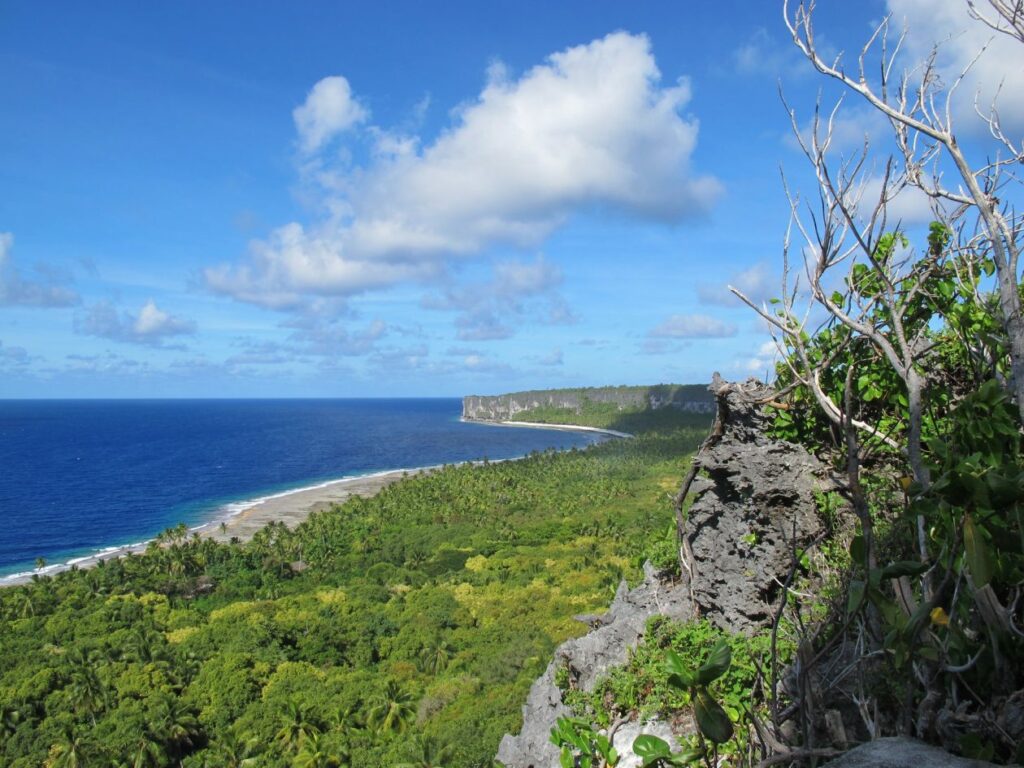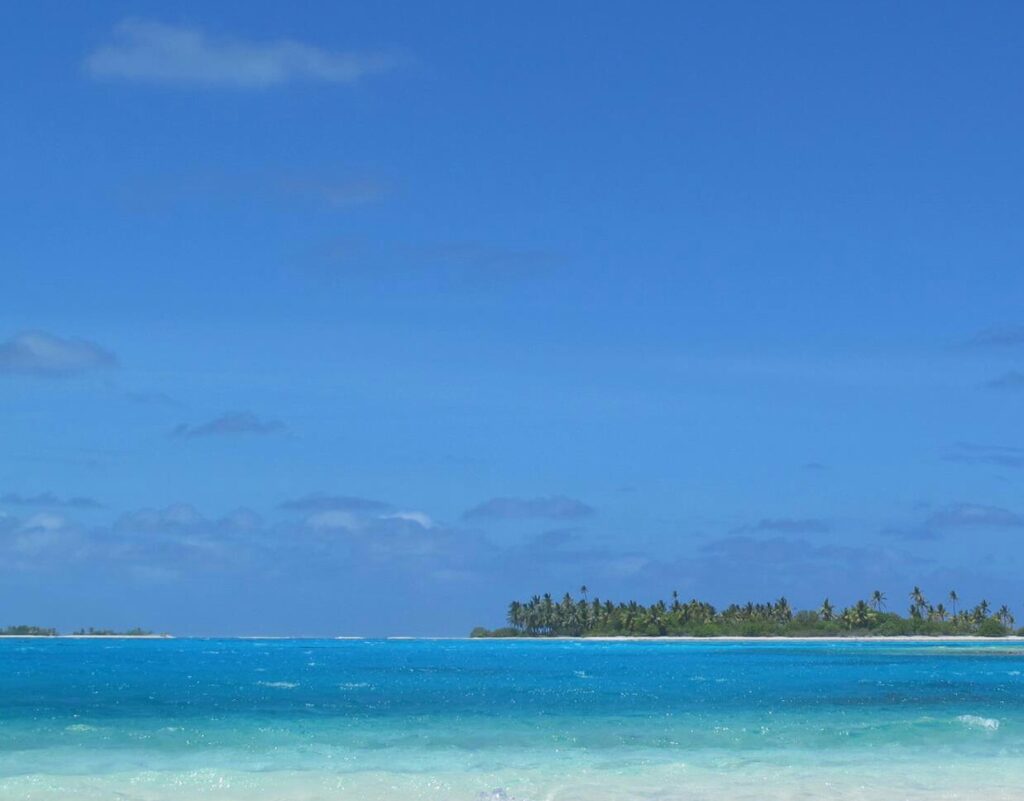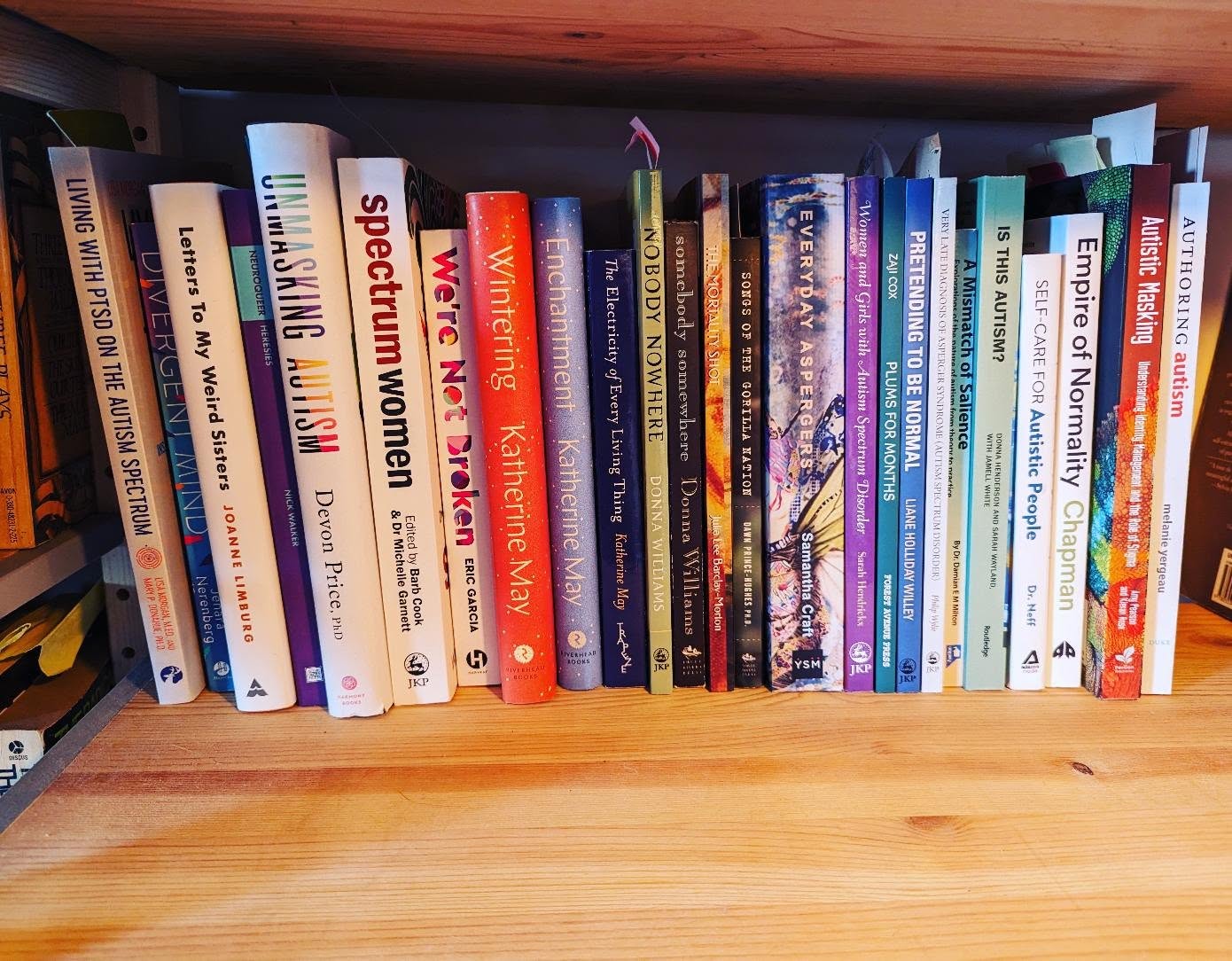
JULIA LEE BARCLAY-MORTON – YOGA, WATER AND REWRITING AUTISM
I interviewed writer Julia Lee Barclay-Morton about her experience of autism. Julia began as an experimental dramatist in New York, moving to the UK to

This beautiful lyrical essay about growing up in Tahiti and losing her father is by Lillian Howan, author of ‘The Charm Buyers‘. Lillian‘s writings have appeared in Asian American Literary Review, Café Irreal, Calyx, New England Review, Vice Versa, and the anthologies Ms Aligned 2 & Under Western Eyes. She lives in Berkley, USA.

Lights from a Distance
Whenever I visited my father in Tahiti, I arrived at night. After a several-hours flight over dark sea and sky, lights would start to appear, and a murmur would arise from some of the passengers – someone saying: look, lights! At first, the lights would be few and distant, scattered in the vast blackness, but then more and more would appear, random dots, and then a long cluster of lights along a coastline, the island of Tahiti appearing out of the darkness.
My father lived by the sea, along Matavai Bay by the stretch of black sand that forms the northernmost point of the island. From there at Point Venus, a lighthouse sends its sweeping beacon of light. In the last years of his life, my father liked to sit in his garden where he could gaze across the waters to the island of Moorea in the distance.
Tahiti and Moorea are part of the Society Islands, one of five island groups that form French Polynesia or Te Ao Mā’ohi. Stretching over an area of the Pacific roughly the size of Europe, the five island archipelagos are: the Society Islands, the Marquesas Islands, the Australs, the Gambiers, and the Tuamotus.
Because the islands are separated by great stretches of ocean, a sense of vastness and distance becomes part of an awareness of the land. My mother often spoke of how, when she was a child, it took an entire night to travel by boat from Ra’iātea, the island of her birth, to Tahiti, and how, looking over the expanse of ocean stretching as far as she could see, she sometimes became frightened during this journey. She said: the sea is so big.
In his speech at the Pacific Educational Conference 2007, Hawaiian traditional navigator Nainoa Thompson explained that The Polynesian Triangle “is the region anchored by Hawai’i in the north, Aotearoa [New Zealand] in the southwest, and Rapa Nui in the east. It is 10 million square miles, bigger than Russia, and three times the size of the continental United States. Even if you do not include the land mass of Aotearoa, all the other islands in Polynesia have a land area equal to one third the state of New York. There is 600 times more water than there is land…” Navigating the immense distances between islands required extraordinary skill, training, strength, and courage on the part of the ancient navigators who first explored the Pacific Islands.

Although my father was born in Tahiti and my mother was born in Ra’iātea, my great-grandparents were born in China. They were Hakka, the wandering, peripatetic Guest People of China. All during my childhood, I heard my grandfather’s stories that we were from “The North.” I had no idea where this North was located and I knew, even at a young age, that my grandfather had never actually seen this place – I just felt his deep pride that his ancestors had originated from there, a place that existed predominantly in memory. My mother also spoke of the liang kong, the “clear hills” where her grandparents were born. She had never seen these hills, but whenever I heard her speaking of the liang kong, it seemed from her tone of voice that this was a special, almost magical, place. It was this profound feeling that anchored me, that imbued my childhood with a sense that there existed an unseen place where I belonged.
Nainoa Thompson described how his teacher, Micronesian master navigator Mau Piailug, addressed Thompson’s growing sense of fear and panic before setting sail from Hawai’i to Tahiti using only traditional non-instrument navigation. The sea voyage would cover 2,500 miles and take one month. Mau took Thompson to Lāna’i Lookout at sunrise and sunset, “the most important part of the day for navigators – the change from night to day – and we looked at the stars, the colors of the sky, the wind, and the waves.” Mau asked Thompson to point to the steering stars and Thompson pointed to these stars. Mau then asked Thompson to show him “the star compass and the 32 houses that all the steering stars lie in” and he did so. Mau then asked “show me the star house of Tahiti” and Thompson pointed to the star house of Tahiti. Mau then asked “Can you see the island?” Nainoa Thompson knew that his teacher was not asking about what the eyes can see. At first, not knowing the answer, he waited, but finally he replied, “I can see the image of the island in my mind.”
Mau replied, “Nainoa, you keep the image in your mind because if you forget what it looks like, you’ll be lost.”

My father was deeply creative, warm-hearted, and turbulent, and it was not always easy for me to visit his house at the edge of the sea. Several months could pass before I would decide to begin my journey to see him again. The last time that I visited, he had become a shell with cloudy eyes, and I thought that, this time, my father would not be able to recognize me. For a long moment, he looked at where I stood beside his bedside, and then his eyes filled with tears and he reached for my hand. I was holding his hand early the following morning as the hospice nurse washed his face and then asked if he would like a shave. My father nodded and the nurse shaved him carefully and slowly with a razor – his skin was so transparent and frail. I was still holding his hand when my father suddenly turned his head and looked directly at me. His eyes widened and his gaze grew suddenly clear as if he were really, truly seeing me. He let out one long breath.
In the many months since my father’s passing, I have felt that he saw more than my appearance in the last moment of his life. It was as if he widened his eyes to see something more clearly than what is ordinarily seen.

Nainoa Thompson said that his teacher showed him “the stars that we will use to find Tahiti.” More than that, his teacher taught that it was the inner image of the island of Tahiti, a place that could not yet be physically seen, that held the key to finding the way across the great, dark distance.
In my young adulthood, I sometimes walked with my father at night by the ocean, the waves falling over the volcanic black sand where he lived. My father loved Tahiti where he was born. Although I felt the lure and beauty of the island, I knew that I could never understand Tahiti as well as my father did. It was the place where my mother was buried and where my father chose to spend his last years. For me, returning to Tahiti meant returning to the land of my parents and my grandparents. I felt that I understood the island least whenever I presumed to know more. It was only by returning to a point of not-knowing, that I could begin to truly listen.
My father walked with a sense of purpose on the beach. He was not a tall man and stood five foot, six inches, but it always seemed to me that he covered a lot of ground as he walked. I would pause to look out to sea, at the ghostly white foam of the waves that glowed in the darkness. My father and I would gaze overhead – as we had done ever since I was a child – and exclaim over the brilliant stars sparkling across the sky. Never did I see a sky so alive with stars as in Tahiti. My father would point out The Southern Cross, and all four stars seemed so distinct, so easily visible, when he showed their location to me.

Over the years, my feelings towards Tahiti have ebbed and flowed. Held under the magnifying glass of daily life, the island’s warts grow large: the ever-growing traffic congestion in the main city of Papeete, the traffic jams entering and leaving the city, the byzantine political machinations, the insanely high cost of ordinary, everyday items. And yet, even now, as I write these sentences, a yearning grows within, an intense nostalgia for the island of Tahiti.
Again, I wish to walk on the black sand where I once walked with my father, to gaze up into the sky at night, a sky so vast with its infinity of stars. Again, I search for an anchor, for the clarity of The Southern Cross, the constellation that my father once taught me when I was a child looking up in the darkness, into the multitude of stars that could unmoor the mind with its numbers without end.
What is it that anchors, that reaches to us across the distance so that we can navigate into the immense unknown? The navigator Nainoa Thompson said that his teacher Mau “knew that in the image of the island lived all your values, all your sense of purpose, all the things that are meaningful. Mau knew, keep the image of the island in your mind because that’s what you care about, that’s what is meaningful to you.” For some, it’s this interior image, whether it be a mythic North or the ancestral island home beneath the Southern Cross or something known only in the deep recesses of the heart; for others, the struggle is just to find this inner image, a guiding compass that would light the way through turmoil and upheaval. I, too, find myself far from the island of Tahiti as I write these words, journeying in that long stretch away from the home of my parents and my ancestors, afloat in a seemingly unknown world. I, too, take to heart the words of the great navigators of the deep oceans and wait for the appearance of the distant lights pointing to home.

*All Nainoa Thompson quotes are from: Thompson, Nainoa. “E Ho’I Mau: Honoring the Past, Caring for the Present, Journeying to the Future.” Hūlili: Multidisciplinary Research on Hawaiian Well-Being 10 (2016)
You can buy Lillian Howan’s novel The Charm Buyers, set in Tahiti. at Amazon UK here and at Amazon USA here. Lillian’s blog is here, her Facebook page here and her Twitter page is here.
Here's Lillian's description of The Charm Buyers: 'The Charm Buyers describes extraordinary beauty and turbulent change: Tahiti during the last years of French nuclear testing in the Pacific. A chronicle of cultural change, a bildungsroman, a love story, The Charm Buyers unfolds on many levels. Marc Antoine Chen, the troubled heir of black pearl cultivators, narrates his journey through a labyrinth of elusive truths. As a child, Marc lives in a dreamlike world with his great-grandmother and her stories of a semi-nomadic Hakka culture that no longer exists. The Hakka, brought from China to Tahiti to work in cotton in the nineteenth century, settled in communities throughout the South Pacific. On the verge of adulthood, Marc falls in love with the calm and confident Marie-Laure Li, but when she leaves to study in France, Marc drifts into black market trade. Years later, Marie-Laure returns, suffering from a debilitating malady surfacing in the wake of nuclear testing and Marc is offered a strange, magical proposal in exchange for the life of his once beloved. Set against the background of the French colonial past and the Ma’ohi struggle for independence, The Charm Buyers presents a world in transition and its people: pearl cultivators, taro farmers, politicians, smugglers, and shamans.'
Next week I interview Ken Edwards of Afrit Nebula who , with his wife Elaine, plays music that is influenced by ‘Klezmer, Sephardic, Balkan, Cuban, folk-rock and jazz’ – but in a style that is very much their own.
ABOUT LESLIE TATE’S BOOKS:

I interviewed writer Julia Lee Barclay-Morton about her experience of autism. Julia began as an experimental dramatist in New York, moving to the UK to

I interviewed Gillean McDougall from Glasgow, who edited the collaborative projects Honest Error (on Charles Rennie Mackintosh and his wife Margaret Macdonald) and Writing the

I interviewed French writer Delphine de Vigan, whose book, No et moi, won the prestigious Prix des libraires. Other books of hers have won a clutch

I interviewed Joanne Limburg whose poetry collection Feminismo was shortlisted for the Forward Prize for Best First Collection; another collection, Paraphernalia, was a Poetry Book Society Recommendation. Joanne

I interviewed Katherine Magnoli about The Adventures of KatGirl, her book about a wheelchair heroine, and Katherine’s journey from low self-esteem into authorial/radio success and
| Cookie | Duration | Description |
|---|---|---|
| cookielawinfo-checkbox-analytics | 11 months | This cookie is set by GDPR Cookie Consent plugin. The cookie is used to store the user consent for the cookies in the category "Analytics". |
| cookielawinfo-checkbox-functional | 11 months | The cookie is set by GDPR cookie consent to record the user consent for the cookies in the category "Functional". |
| cookielawinfo-checkbox-necessary | 11 months | This cookie is set by GDPR Cookie Consent plugin. The cookies is used to store the user consent for the cookies in the category "Necessary". |
| cookielawinfo-checkbox-others | 11 months | This cookie is set by GDPR Cookie Consent plugin. The cookie is used to store the user consent for the cookies in the category "Other. |
| cookielawinfo-checkbox-performance | 11 months | This cookie is set by GDPR Cookie Consent plugin. The cookie is used to store the user consent for the cookies in the category "Performance". |
| viewed_cookie_policy | 11 months | The cookie is set by the GDPR Cookie Consent plugin and is used to store whether or not user has consented to the use of cookies. It does not store any personal data. |
8 responses
Wonderful, fascinating, makes one want to be there, on the water, in the waves. Thanks Lillian and Leslie!
Thank you, Chrys. This piece is very close to my heart so I’m glad it had a similar effect on you.
Fabulous part two Leslie and Lillian and I felt that I was walking the black sand alongside you. We lived in the mountains above Madrid and until I moved there, I had forgotten how exquisite the night sky can be when away from light pollution. You can indeed see many things more clearly after staring into the universe.
Thank you, Sally! ?❤?
This is such an evocative piece. How could someone living like a speck of plancton in a vast, turquoise ocean under an infinite sky, anchored only by the constellations not be shaped indelibly by such a life?
There is a form of culture shock that someone like myself, living in a vast, often cold land (Canada) under a Boreal sky, far from the ocean, cannot easily overcome, but can think about dreamily.
The author’s father represents a whole world that is unseen by most humans, undervalued, and not understood. We no longer find our anchoring in the sky, or the waters, or any other part of the natural world. At least, that’s true for most of us and it is a great loss and the source of much anxiety. But so, too, is the modern world encroaching upon even the most remote, exotic places…
We will have to rediscover and relearn what we are allowing to be snuffed out.
Yes, the underlying message is the need for culture change in what we call ‘The West’! xxxx
Such a beautiful and inspiring piece. Thanks, Lillian and Leslie.
Thanks, Olga. It’s one of the best I’ve published! 🙂